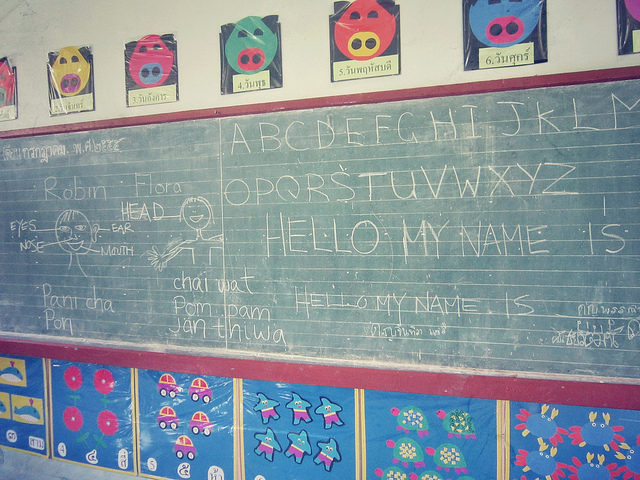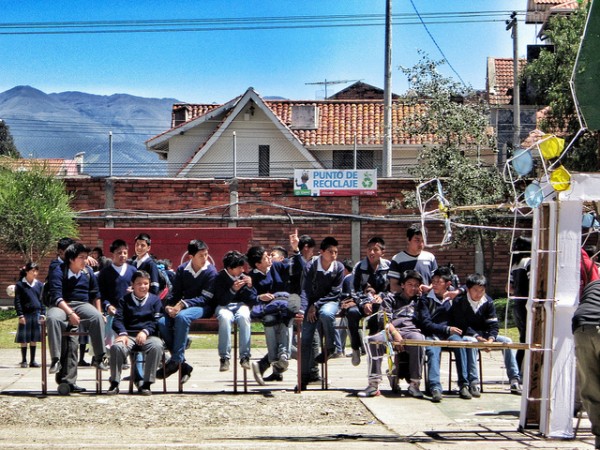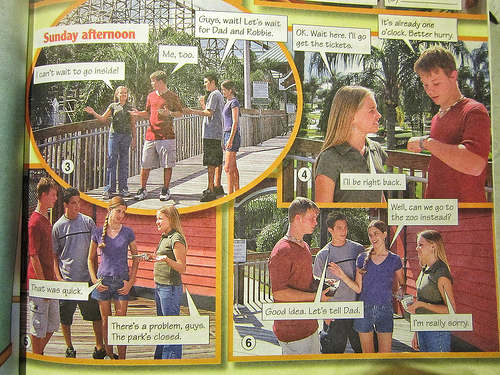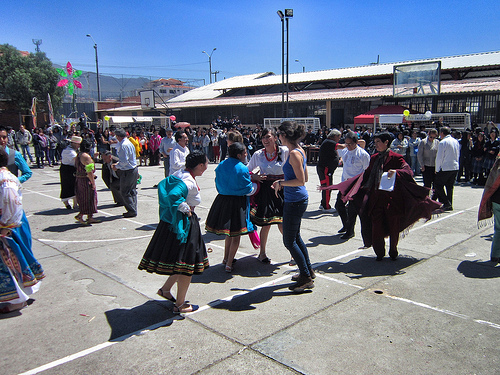“¿TRES ensaladas de frutas, por favor?”
I leave the tiny serving hatch, where three women wearing hair nets and harried expressions rush back and forth. Plates of food scattered around the kitchen are ferried to the multitude of teenage hands reaching through the bars at a speed my eyes can’t even keep up with.
Heading over to our regular table, I drop down into a chair with a sigh.
“I just had the Year 8s again. Pablo…he’s impossible!”
Sam shakes his head.
“I literally can’t believe what I used to put my teachers through. You know the most annoying kid in each of your classes? That’s what I was like at school. Except worse.”
It’s not a bad idea, really. Got an impossible pupil? Send him off to another country and tell him to teach. It’ll shake the belligerence right out of him.




